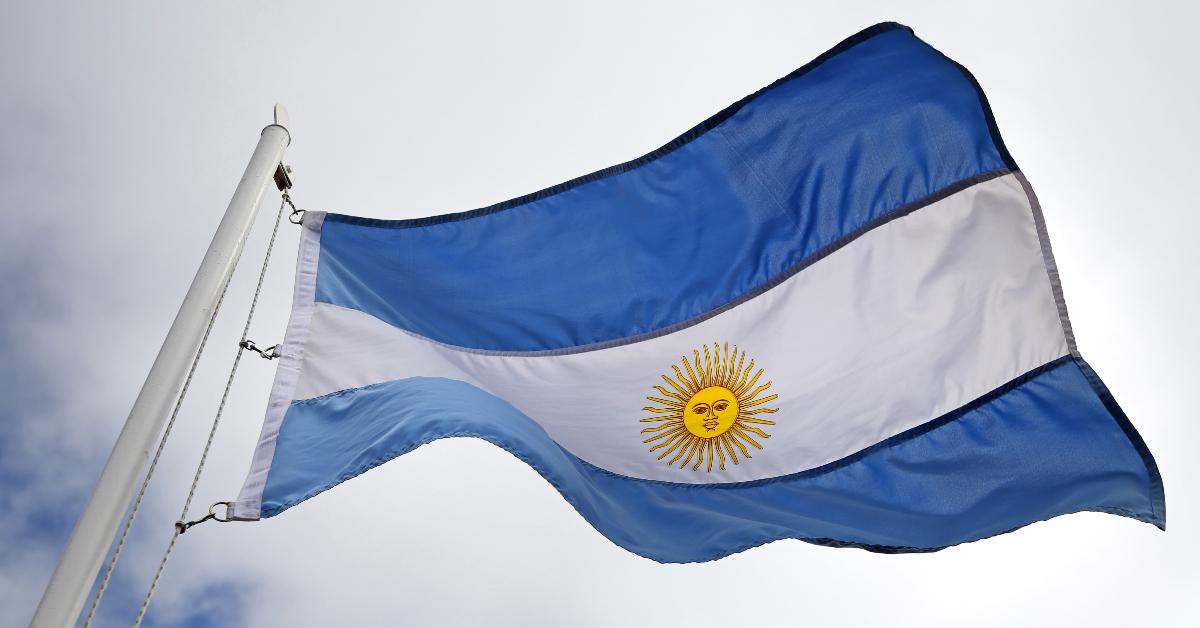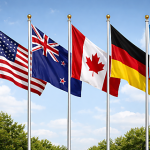
Javier Milei’s sensational performance in the Argentinean presidential election primary confirms the very real possibility that an anarchocapitalist who quotes Rothbard and Mises could become Argentina’s next president. If elected, there is little doubt that Milei will implement proposals aimed at profoundly reshaping Argentina’s economy along free market lines. Unfortunately, a controversial idea to fully dollarize the Argentinean economy seems to have become his signature policy. This is at odds with the rest of his platform.
Flashback: The Fed Doesn’t Care about Argentina
In the 1990s, Argentina established a quasi-dollarized “convertibility” system that pegged the peso to the dollar. It ended disastrously, with a painful crisis in 2001–2 that collapsed the entire economy. The core flaw? The Fed serves the interests of the United States alone and not those of Argentina or anyone else.
Initially, convertibility reduced inflation while credit with low US interest rates fueled growth. By the late 1990s, however, the US economy was overheating and the Fed hiked rates. With the currency pegged, Argentina’s central bank (the BCRA) had no choice but to match the high US rates, crushing GDP.
Now, Milei is proposing dollarization when the Fed is once again in a tightening phase. If implemented, Argentina’s economy would again be chained to a monetary policy out of sync with its own business cycle, which otherwise depends more on Brazil and China than the US.
Dollarization Doesn’t Reduce Debt
Dollarizing an economy does not remedy the monetary expansion and consequent indebtedness that result from an unbacked currency. Assuming hard dollarization, Argentina is limited to three options for bringing dollars into its economy: exports, foreign investment, and borrowing.
Since trade surpluses are rare for Argentina and foreign investment is fickle (see next section), the country would come to heavily depend on debt issuance to fund economic activity. Just as in the ’90s, Wall Street banks would happily step in and create nearly risk-free credit (bad loans can be off-loaded onto the Fed as a lender of last resort). Argentinean banks would follow suit, borrowing dollars and relending at a markup despite being ineligible for Federal Reserve bailouts. The only real constraint on credit expansion would be the unwillingness of borrowers to take on more dollar debt. But Ecuador, which dollarized in 2000, offers a cautionary tale: its public debt has since ballooned from $16 billion to $75 billion.
Dollarization Enmeshes Argentina in an Unjust Global Order
It’s strange to talk about dollarization in Argentina when it—along with the rest of the world—is already dollarized. The US dollar is the global reserve currency: all countries trade with dollars and about half of all loans and securities in foreign banking systems are created in dollars. As Hans-Hermann Hoppe notes, this effectively reduces the world to a currency exploitation zone under US dominance. To further integrate with this system would be for Argentina to accept outright exploitation in various forms.
First, the dollar system is an inherently tributary system. The US prints dollars and the world works to obtain them. But much of the money flowing back to the US will purchase not goods and services but rather US government debt—which is thereby monetized. In other words, the US extracts real value from the rest of the world by issuing unbacked currency printed out of thin air.
Second, the Federal Reserve extracts value through the Cantillon effect. The first recipients of newly issued money—namely, US banks and corporations—get to make purchases before the money percolates through the global system and raises prices. Those furthest away feel the full impact of inflation. By the time US dollars reach Argentina, which is economically peripheral, prices will have already risen in the core. Thus, a hidden inflation tax is imposed on its citizens.
Third and most destructive, many of these outflowing dollars are recycled back into US Treasuries and networks of other assets, such as real estate, land, and even stocks, that the Fed props up by printing money. Ultimately, the function of US capital markets is not to direct savings into real productive investment but to collect economic rent. Dollarization will induce Argentina to prop up this “market” and, with its currency stabilized, facilitate a rush of income generated in Argentina away from domestic production and into the rentier economy of the US, a process known as capital flight.
Here again Ecuador is instructive: dollarization did not entice investors to make long-term fixed capital investments, such as in factories and transport infrastructure, that could benefit Ecuador’s economy, but it has encouraged them to ride the US real estate and stock market booms—at an average net outflow of nearly a billion dollars a year since 2000.
Politicization
Foreign banking systems do not automatically qualify for Fed bailouts, but central banks in core countries have certain privileges. During the 2008 financial crisis, the Fed set up swap lines to provide dollars to the European Central Bank, Bank of England, and Bank of Japan, but excluded banks from peripheral countries like Argentina. The Fed may grant relief to Argentina when dollar shortages hit, but only through conditional loans that do not contradict US strategic interests.
If the BCRA is completely abolished (Milei’s stated goal), Argentina’s dollarized banking system would be beholden to increasingly politicized lending conditions set by private banks connected to the Fed. Recently, Ecuador and Belize agreed to hand over swathes of territory to environmental conservation programs and sign up for a number of environmental, social, and corporate governance (ESG) targets in exchange for dollar debt relief. Milei, who does not seem to care for ESG and has been vocal on gender ideology and other conservative hot-button topics, has been painted as a “fascist” in American media. At a time when the US government and its intelligence community believe the biggest hemispheric threats are right-wing strongmen like Trump and Bolsonaro, the power to ration dollars could be leveraged against Milei personally.
Leaders Don’t Survive Their Dollarization Policy
Past attempts at dollarization in Latin America have all ended in a loss of power for the implementing party. Even in Ecuador, where the policy has remained, there followed a painful adjustment period that saw President Mahuad ejected from office, paving the way for Rafael Correa and a decade of “twenty-first-century socialism.” Argentina’s first quasi-dollarization was the immediate cause of the socialist Kirchners coming to power. Unless it goes off without a hitch, the plan will this time likely see Milei removed and his ideas discredited—laying the ground for another era of antimarket regimes.
Conclusion
Milei deserves enormous credit for advancing libertarian ideas across Latin America. But his dollarization proposal contradicts the libertarian spirit and insights on the global central banking order developed by thinkers such as Rothbard and Hoppe. It would mean Argentina further upholding the US imperium through its labor and leaving its economic and political destiny in the hands of the Federal Reserve and the banking elites who preside over the dollar system.
Rather than committing to a policy that may bring catastrophe and benefit vested interests, Milei’s platform should—as Ron Paul’s did in 2012—place the burden of structural adjustment on the powerful, not the poor. This could mean, for example, promoting a free banking system based on gold or community credit rather than dollar reserves.
Ultimately, however, Milei—and anyone who comes after him—needs to understand the real reason why free market philosophy has failed to take root in Latin America: its perceived alliance with privilege and reaction. Milei’s attacks against the Left have gained him a lot of followers for now, but the only way libertarianism can triumph in the long run is by demonstrating its power to achieve the Left’s stated goals—ending privilege, alleviating poverty, upholding human dignity, and ending imperialism—much more effectively than socialist policies ever could.
Libertarianism’s natural constituency in Latin America is the working class, whose right to economic freedom is infringed daily by the state. By emphasizing voluntarism—the right of all, especially the poor and marginalized, to control their bodies and justly acquired property without harming others—rather than policies like dollarization that set up or reinforce hierarchies, libertarians can speak to the real needs of the masses and end the eternal recurrence of socialism in the Americas.







